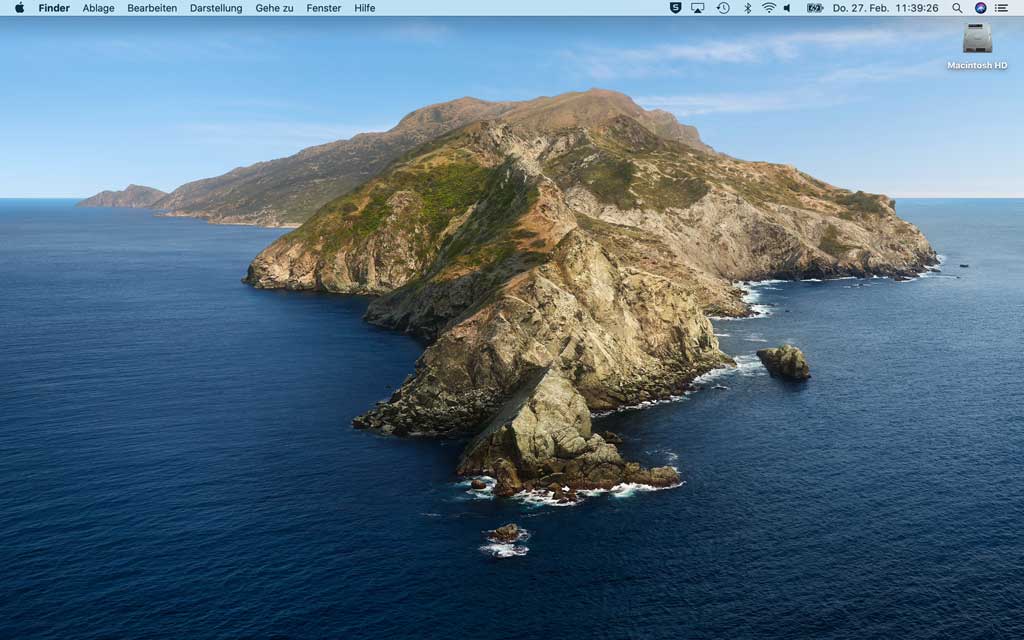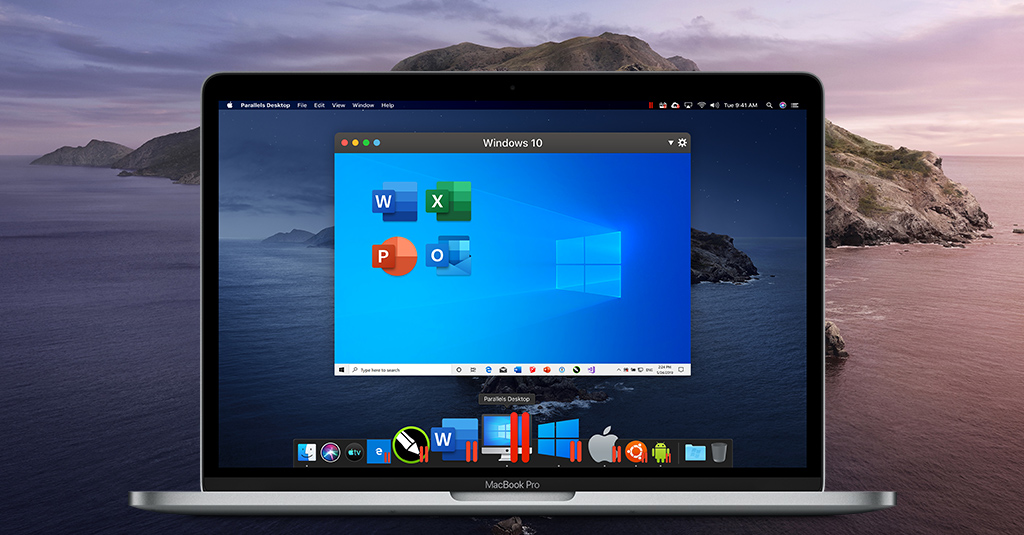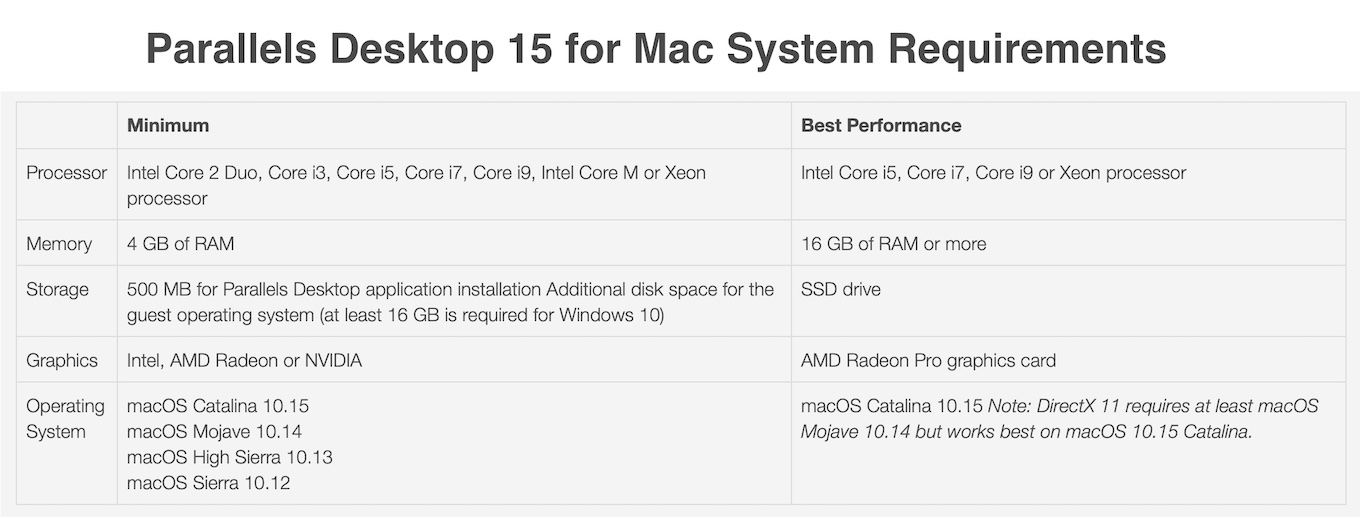
- #Parallels desktop 15 compatibility catalina how to#
- #Parallels desktop 15 compatibility catalina mac os x#
- #Parallels desktop 15 compatibility catalina 32 bit#
- #Parallels desktop 15 compatibility catalina pro#
Semi would develop system-on-chips for Apple's iPods and iPhones. Semi for its intellectual property and engineering talent. At the time, it was reported that Apple bought P.A. In 2008, Apple bought processor company P.A. Processor development Īn illustration of the Apple A12Z processor Support for PowerPC applications via Rosetta was dropped from macOS in 10.7 "Lion" in July 2011, five years after the transition was complete.
#Parallels desktop 15 compatibility catalina mac os x#
Īpple ceased support for booting on PowerPC as of Mac OS X 10.6 "Snow Leopard" in August 2009, three years after the transition was complete. The hardware transition was completed when Intel-based Mac Pros and Xserve computers were announced in August 2006 and shipped by the end of the year. īy June 2006, only Apple's high-end desktop computer and server products were still using PowerPC processors.
#Parallels desktop 15 compatibility catalina how to#
"As we look ahead, we can envision some amazing products we want to build.And we don't know how to build them with the future PowerPC roadmap", Jobs said. At his 2005 WWDC keynote address, Steve Jobs said that continuing to use PowerPC processors, which consumed more energy than Intel chips, would prevent Apple from making better workstation computers and laptops. In 20, Apple moved its Macintosh computers from IBM's PowerPC CPUs to Intel's x86 CPU architecture. Main article: Mac transition to Intel processors Apple held a 43% stake in the company, which was reduced to 14.8% in 1999.
#Parallels desktop 15 compatibility catalina 32 bit#
One of the first designs of the new company would be the ARM610 SoC, initially for Apple, that allowed the Endianness to be swapped, increased the address space from 26 bit (64 MB) to 32 bit (4 GB), and modified the memory management unit.

The company was named Advanced RISC Machines Ltd, becoming the new meaning of the ARM acronym.

In 1990, a new joint-venture was created between Acorn, Apple and VLSI Technology with the goal of pursuing the development of the ARM processor. The project was cancelled but Apple again partnered with Acorn when it needed a low-power, efficient processor for its future Newton PDA. In 1985, Apple's Advanced Technology Group worked with Acorn to create an experimental prototype, code-named Mobius, to replace the Apple II, using a modified ARM processor. In 1983, Acorn Computers started working on a project to design its own CPU architecture and instructions set, called the Acorn RISC Machine (ARM). Intel CTO Mike Mayberry countered that quality assurance problems may arise at large scale from any CPU vendor. In June 2020, former Intel principal engineer François Piednoël said Intel's "abnormally bad" quality assurance in its Skylake processors, making Apple "the number one filer of problems in the architecture", helped Apple decide to migrate. In 2019, Apple blamed Intel processor shortages for a decline in Mac sales. Meanwhile, a 2018 report suggested that Intel chip issues prompted a redesign of the MacBook. Apple reportedly had trouble with Intel modems for iPhones in 2017 due to technical issues and missed deadlines. In the 2010s, media reports documented Apple's frustrations and challenges with the pace and quality of Intel's technology development.

Between October 2016 and August 2020, Intel-based Macs with Apple-designed ARM co-processors were released. Apple has designed its own custom ARM chips since 2009, which it has since used in its iPhone, iPad, iPod, Apple TV, Apple Watch, AirPods, Beats and HomePod products. The first Apple products with an ARM system on a chip were the 1993 Newton personal digital assistant, the 2001 iPod, and the 2007 iPhone. A partnership was established with Acorn Computers, and VLSI in 1990, and work began on a chip for small devices. The ATG thought it might replace the MOS 6502 of the Apple II range or the 68000 of the original Macintosh, or become the basis of a tablet device, under Paul Gavarini and Tom Pittard, in a project labelled Möbius. The genesis of the third switch began in 1985, when Acorn's ARM architecture was spotted by Apple's Advanced Technology Group, an internal research laboratory. Supported 64-bit Intel systems can still boot the latest versions of macOS. In 2011, Mac OS X Lion dropped support for Macs with 32-bit processors in 2019, macOS Catalina dropped support for 32-bit Intel apps. It switched again, starting in 2005, to Intel 32-bit and 64-bit x86. In the early 1990s, Apple evaluated several possibilities, then switched to the PowerPC family it co-developed with IBM and Motorola.

The first Macintoshes, introduced in 1984, were based on the Motorola 68000 architecture.
#Parallels desktop 15 compatibility catalina pro#
A first-generation MacBook Pro from 2006, one of the first line of Mac computers to feature an Intel processor instead of a PowerPC processor


 0 kommentar(er)
0 kommentar(er)
